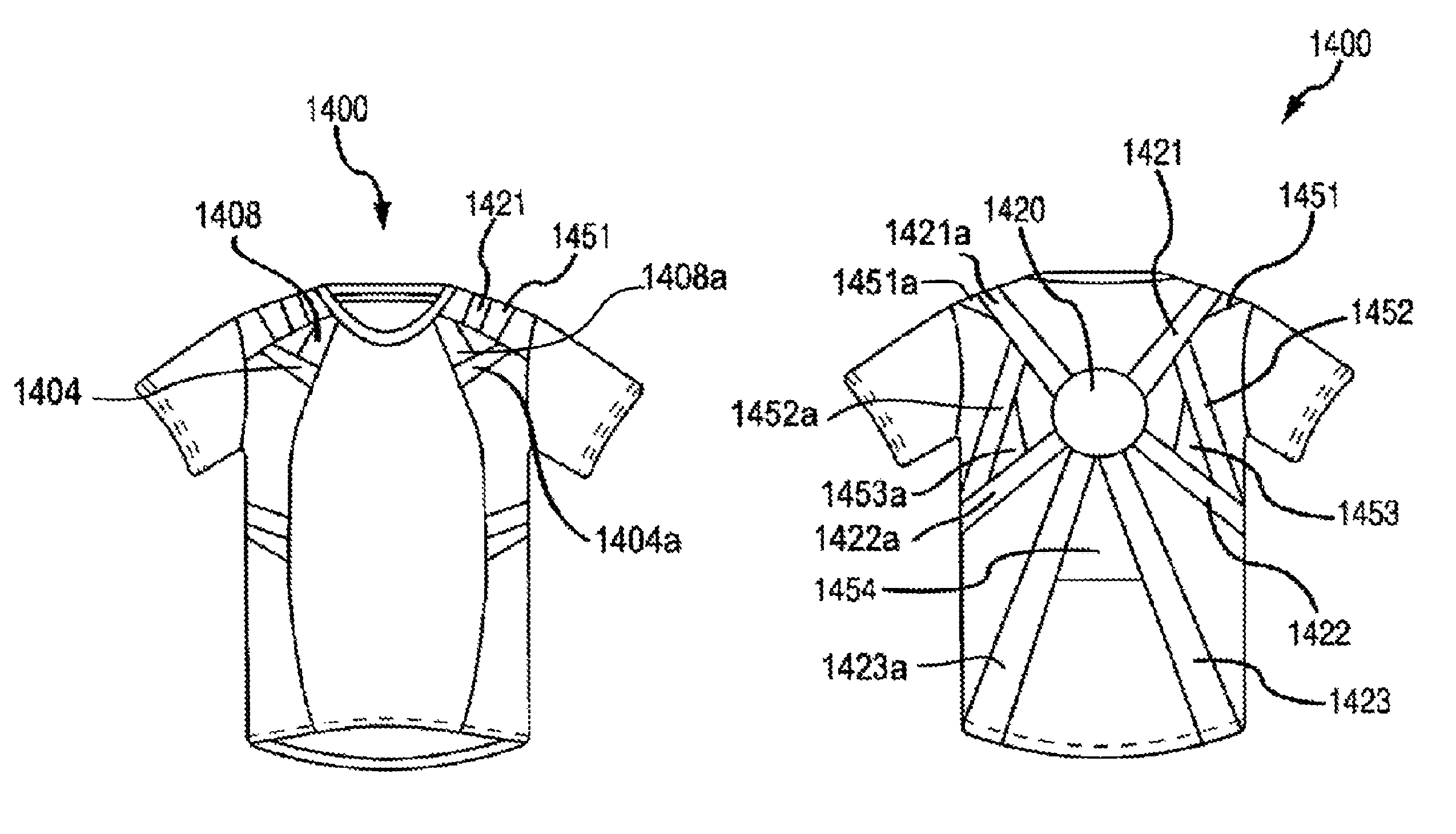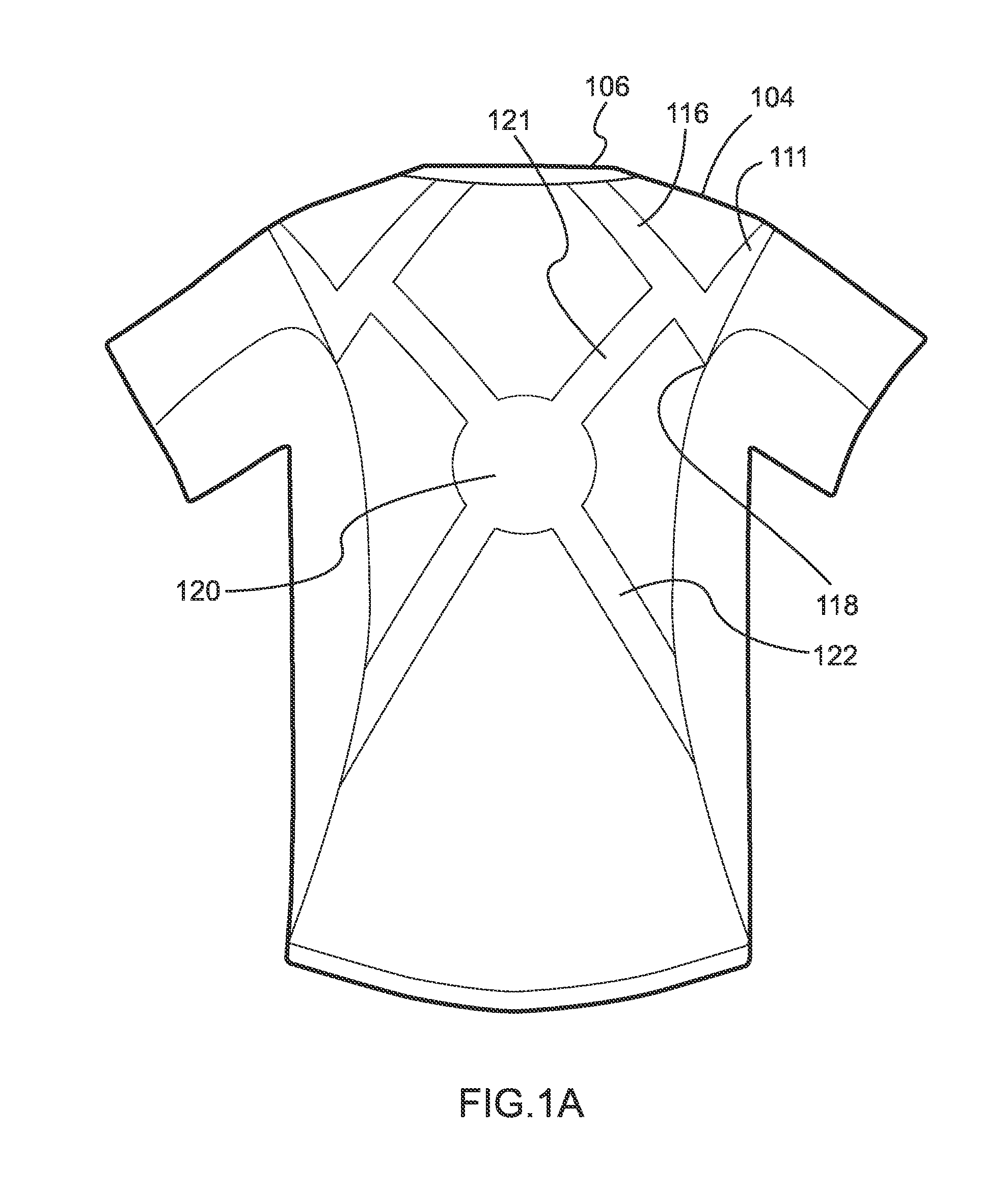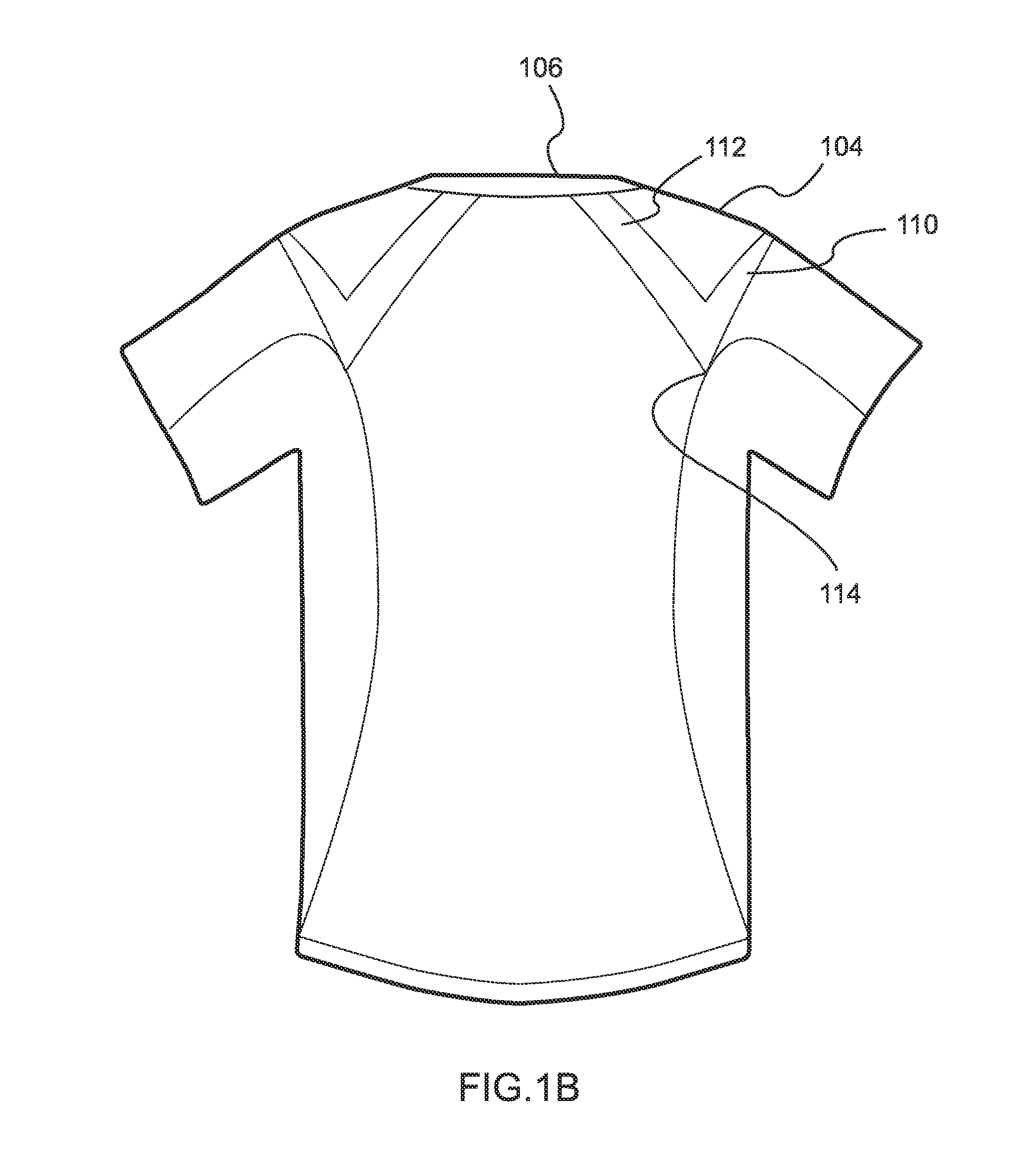Shirts and shorts having elastic and non-stretch portions and bands to provide hip and posture support
a hip and posture support and elastic technology, applied in the field of injury prevention and recovery, can solve the problems of increased risk of lower extremity injury, abnormal spinal and lower extremity kinematics, and increased risk of gait structural overload, so as to reduce lung volume and blood oxygenation, increase the force transmission of the proximal portion, and reduce the effect of rib expansion
- Summary
- Abstract
- Description
- Claims
- Application Information
AI Technical Summary
Benefits of technology
Problems solved by technology
Method used
Image
Examples
Embodiment Construction
[0045]The present disclosure relates generally to performance, injury prevention and rehabilitation. In particular, but not by way of limitation, the present disclosure relates to systems, methods and apparatuses for clothing that compensates, facilitates or trains weakening or injured muscles by supporting the three dimensional position of a bone, a joint or a system of joints rather than covering a particular area specific to the location of any one particular muscle. By directing external forces via fabric tensions in a specific path, skeletal alignment is improved and allows the individual to use his or her own muscular mechanisms to produce healthy movements and counteract movement based problems and clinical symptoms.
[0046]The word “exemplary” is used herein to mean “serving as an example, instance, or illustration.” Any embodiment described herein as “exemplary” is not necessarily to be construed as preferred or advantageous over other embodiments.
[0047]The embodiments of the...
PUM
 Login to View More
Login to View More Abstract
Description
Claims
Application Information
 Login to View More
Login to View More - R&D
- Intellectual Property
- Life Sciences
- Materials
- Tech Scout
- Unparalleled Data Quality
- Higher Quality Content
- 60% Fewer Hallucinations
Browse by: Latest US Patents, China's latest patents, Technical Efficacy Thesaurus, Application Domain, Technology Topic, Popular Technical Reports.
© 2025 PatSnap. All rights reserved.Legal|Privacy policy|Modern Slavery Act Transparency Statement|Sitemap|About US| Contact US: help@patsnap.com



